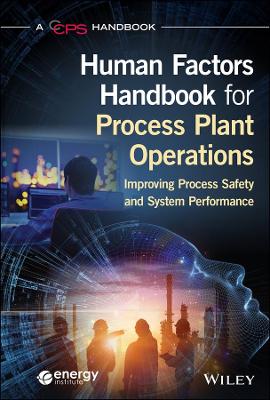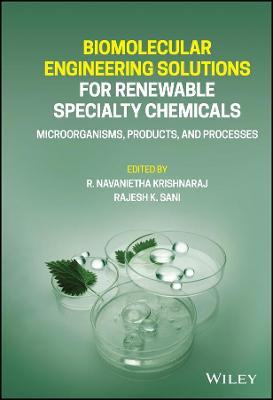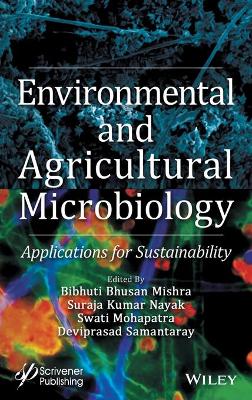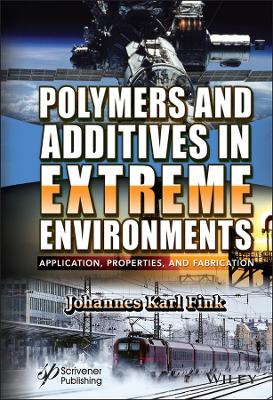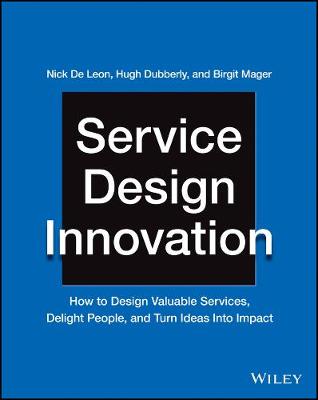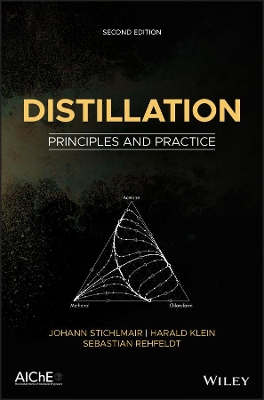Catalysis for a Sustainable Environment
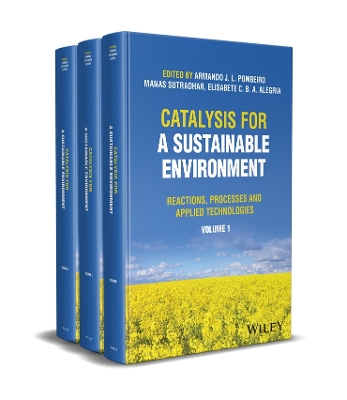 -15%
portes grátis
-15%
portes grátis
Catalysis for a Sustainable Environment
Reactions, Processes and Applied Technologies, 3 Volume Set
Sutradhar, Manas; Pombeiro, Armando J. L.; Alegria, Elisabete C. B. A.
John Wiley & Sons Inc
02/2024
928
Dura
Inglês
9781119870524
15 a 20 dias
Preface xv
Volume 1
1 Introduction 1
Armando J.L. Pombeiro, Manas Sutradhar, and Elisabete C.B.A. Alegria
Structure of the Book 2
Final Remarks 4
Part I Carbon Dioxide Utilization 5
2 Transition from Fossil-C to Renewable-C (Biomass and CO2) Driven by Hybrid Catalysis 7
Michele Aresta and Angela Dibenedetto
2.1 Introduction 7
2.2 The Dimension of the Problem 8
2.3 Substitutes for Fossil-C 8
2.4 Hybrid Catalysis: A New World 11
2.5 Hybrid Catalysis and Biomass Valorization 13
2.6 Hybrid Catalysis and CO2 Conversion 16
2.6.1 CO2 as Building Block 16
2.6.2 CO2 Conversion to Value-added Chemical and Fuels via Hybrid Systems 17
2.7 Conclusions 21
References 21
3 Synthesis of Acetic Acid Using Carbon Dioxide 25
Philippe Kalck
3.1 Introduction 25
3.2 Synthesis of Methanol from CO2 and H2 26
3.3 Carbonylation of Methanol Using CO2 28
3.4 Carbonylation of Methane Using CO2 31
3.5 Miscellaneous Reactions, Particularly Biocatalysis 31
3.6 Conclusions 32
References 32
4 New Sustainable Chemicals and Materials Derived from CO2 and Bio-based Resources: A New Catalytic Challenge 35
Ana B. Paninho, Malgorzata E. Zakrzewska, Leticia R.C. Correa, Fatima Guedes da Silva, Luis C. Branco, and Ana V.M. Nunes
4.1 Introduction 35
4.2 Cyclic Carbonates from Bio-based Epoxides 37
4.2.1 Bio-based Epoxides Derived from Terpenes 39
4.2.2 Bio-based Vinylcyclohexene Oxide Derived from Butanediol 41
4.2.3 Bio-based Epichlorohydrin Derived from Glycerol 42
4.2.4 Epoxidized Vegetable Oils and Fatty Acids 42
4.3 Cyclic Carbonates Derived from Carbohydrates 44
4.4 Cyclic Carbonates Derived from Bio-based Diols 46
4.5 Conclusions 50
Acknowledgements 50
References 50
5 Sustainable Technologies in CO 2 Utilization: The Production of Synthetic Natural Gas 55
M. Carmen Bacariza, Jose M. Lopes, and Carlos Henriques
5.1 CO 2 Valorization Strategies 55
5.1.1 CO 2 to CO via Reverse Water-Gas Shift (RWGS) Reaction 56
5.1.2 CO2 to CH 4 56
5.1.3 Co2 to C X H Y 57
5.1.4 CO2 to CH 3 OH 58
5.1.5 CO2 to CH 3 OCH 3 58
5.1.6 CO2 to R-OH 59
5.1.7 CO2 to HCOOH, R-COOH, and R-CONH 2 60
5.1.8 Target Products Analysis Based on Thermodynamics 60
5.2 Power-to-Gas: Sabatier Reaction Suitability for Renewable Energy Storage 61
5.3 CO 2 Methanation Catalysts 63
5.4 Zeolites: Suitable Supports with Tunable Properties to Assess Catalysts's Performance 64
5.5 Final Remarks 68
References 69
6 Catalysis for Sustainable Aviation Fuels: Focus on Fischer-Tropsch Catalysis 73
Denzil Moodley, Thys Botha, Renier Crous, Jana Potgieter, Jacobus Visagie, Ryan Walmsley, and Cathy Dwyer
6.1 Introduction 73
6.1.1 Sustainable Aviation Fuels (SAF) via Fischer-Tropsch-based Routes 73
6.1.2 Introduction to FT Chemistry 75
6.1.3 FT Catalysts for SAF Production 79
6.1.4 Reactor Technology for SAF Production Using FTS 81
6.2 State-of-the-art Cobalt Catalysts 82
6.2.1 Catalyst Preparation Routes for Cobalt-based Catalysts 85
6.2.1.1 Precipitation Methodology - a Short Summary 85
6.2.1.2 Preparation Methods Using Pre-shaped Supports 85
6.2.1.2.1 Support Modification 85
6.2.1.2.2 Cobalt Impregnation 85
6.2.1.2.3 Calcination 86
6.2.1.2.4 Reduction 88
6.2.2 Challenges for Catalysts Operating with High Carbon Efficiency: Water Tolerance 88
6.2.3 Strategies to Increase Water Tolerance and Selectivity for Cobalt Catalysts 90
6.2.3.1 Optimizing Physico-chemical Support Properties for Stability at High Water Partial Pressure 90
6.2.3.2 Stabilizing the Support by Surface Coating 91
6.2.3.3 Impact of Crystallite Size on Selectivity 91
6.2.3.4 Metal Support Interactions with Cobalt Crystallites of Varying Size 92
6.2.3.5 The Role of Reduction Promoters and Support Promoters in Optimizing Selectivity 94
6.2.3.6 Role of Pore Diameter in Selectivity 96
6.2.3.7 Effect of Activation Conditions on Selectivity 98
6.2.4 Regeneration of Cobalt PtL Catalysts- Moving Toward Materials Circularity 100
6.3 An Overview of Fe Catalysts: Direct Route for CO 2 Conversion 101
6.3.1 Introduction 101
6.3.2 Effect of Temperature 102
6.3.3 Effect of Pressure 103
6.3.4 Effect of H 2 :CO Ratio 104
6.3.5 Catalyst Development 104
6.3.6 Stability to Oxidation by Water 104
6.3.7 Sufficient Surface Area 105
6.3.8 Availability of Two Distinct Catalytically Active Sites/phases 105
6.3.9 Sufficient Alkalinity for Adsorption and Chain Growth 106
6.4 Future Perspectives 106
References 108
7 Sustainable Catalytic Conversion of CO 2 into Urea and Its Derivatives 117
Maurizio Peruzzini, Fabrizio Mani, and Francesco Barzagli
7.1 Introduction 117
7.2 Catalytic Synthesis of Urea 119
7.2.1 Urea from CO 2 Reductive Processes 120
7.2.1.1 Electrocatalysis 120
7.2.1.2 Photocatalysis 122
7.2.1.3 Magneto-catalysis 123
7.2.2 Urea from Ammonium Carbamate 124
7.3 Catalytic Synthesis of Urea Derivatives 127
7.4 Conclusions and Future Perspectives 133
Part II Transformation of Volatile Organic Compounds (VOCs) 139
8 Catalysis Abatement of No X /vocs Assisted by Ozone 141
Zhihua Wang and Fawei Lin
8.1 No X /voc Emission and Treatment Technologies 141
8.1.1 No X /voc Emissions 141
8.1.2 No X Treatment Technologies 142
8.1.2.1 Sncr 142
8.1.2.2 Scr 142
8.1.2.3 SCR Catalysts 142
8.1.2.4 Ozone-assisted Oxidation Technology 142
8.1.3 VOC Treatment Technologies 143
8.1.3.1 Adsorption 143
8.1.3.2 Regenerative Combustion 143
8.1.3.3 Catalytic Oxidation 144
8.1.3.4 Photocatalytic Oxidation 144
8.1.3.5 Plasma-assisted Catalytic Oxidation 144
8.2 NO Oxidation by Ozone 144
8.2.1 NO Homogeneous Oxidation by Ozone 145
8.2.1.1 Effect of O 3 /NO Ratio 145
8.2.1.2 Effect of Temperature 145
8.2.1.3 Effect of Residence Time 145
8.2.1.4 Process Parameter Optimization 146
8.2.2 Heterogeneous Catalytic Deep Oxidation 146
8.2.2.1 Catalytic NO Deep Oxidation by O 3 Alone 146
8.2.2.2 Catalytic NO Deep Oxidation by Combination of O 3 and H 2 O 148
8.3 Oxidation of VOCs by Ozone 150
8.3.1 Aromatics 150
8.3.1.1 Toluene 150
8.3.1.2 Benzene 153
8.3.2 Oxygenated VOCs 154
8.3.2.1 Formaldehyde 154
8.3.2.2 Acetone 154
8.3.2.3 Alcohols 155
8.3.3 Chlorinated VOCs 155
8.3.3.1 Chlorobenzene 155
8.3.3.2 Dichloromethane 155
8.3.3.3 Dioxins and Furans 156
8.3.4 Sulfur-containing VOCs 157
8.4 Conclusions 157
References 157
9 Catalytic Oxidation of VOCs to Value-added Compounds Under Mild Conditions 161
Elisabete C.B.A. Alegria, Manas Sutradhar, and Tannistha R. Barman
9.1 Introduction 161
9.2 Benzene 162
9.3 Toluene 167
9.4 Ethylbenzene 171
9.5 Xylene 172
9.6 Final Remarks 175
Acknowledgments 176
References 176
10 Catalytic Cyclohexane Oxyfunctionalization 181
Manas Sutradhar, Elisabete C.B.A. Alegria, M. Fatima C. Guedes da Silva, and Armando J.L. Pombeiro
10.1 Introduction 181
10.2 Transition Metal Catalysts for Cyclohexane Oxidation 182
10.2.1 Vanadium Catalysts 182
10.2.2 Iron Catalysts 186
10.2.3 Cobalt Catalysts 189
10.2.4 Copper Catalysts 191
10.2.5 Molybdenum Catalysts 198
10.2.6 Rhenium Catalysts 199
10.2.7 Gold Catalysts 200
10.3 Mechanisms 201
10.4 Final Comments 202
Acknowledgments 203
References 203
Part III Carbon-based Catalysis 207
11 Carbon-based Catalysts for Sustainable Chemical Processes 209
Katarzyna Morawa Eblagon, Raquel P. Rocha, M. Fernando R. Pereira, and Jose Luis Figueiredo
11.1 Introduction 209
11.1.1 Nanostructured Carbon Materials 209
11.1.2 Carbon Surface Chemistry 210
11.2 Metal-free Carbon Catalysts for Environmental Applications 212
11.2.1 Wet Air Oxidation and Ozonation with Carbon Catalysts 212
11.3 Carbon-based Catalysts for Sustainable Production of Chemicals and Fuels from Biomass 214
11.3.1 Carbon Materials as Catalysts and Supports 214
11.3.2 Cascade Valorization of Biomass with Multifunctional Catalysts 216
11.3.3 Carbon Catalysts Produced from Biomass 219
11.4 Summary and Outlook 220
Acknowledgments 221
References 221
12 Carbon-based Catalysts as a Sustainable and Metal-free Tool for Gas-phase Industrial Oxidation Processes 225
Giulia Tuci, Andrea Rossin, Matteo Pugliesi, Housseinou Ba, Cuong Duong-Viet, Yuefeng Liu, Cuong Pham-Huu, and Giuliano Giambastiani
12.1 Introduction 225
12.2 The H 2 S Selective Oxidation to Elemental Sulfur 226
12.3 Alkane Dehydrogenation 231
12.3.1 Alkane Dehydrogenation under Oxidative Environment: The ODH Process 231
12.3.2 Alkane Dehydrogenation under Steam- and Oxygen-free Conditions: The DDH Reaction 237
12.4 Conclusions 240
Acknowledgments 241
References 241
13 Hybrid Carbon-Metal Oxide Catalysts for Electrocatalysis, Biomass Valorization and, Wastewater Treatment: Cutting-Edge Solutions for a Sustainable World 247
Clara Pereira, Diana M. Fernandes, Andreia F. Peixoto, Marta Nunes, Bruno Jarrais, Iwona Kuzniarska-Biernacka, and Cristina Freire
13.1 Introduction 247
13.2 Hybrid Carbon-metal Oxide Electrocatalysts for Energy-related Applications 249
13.2.1 Oxygen Reduction Reaction (ORR) 249
13.2.2 Oxygen Evolution Reaction (OER) 254
13.2.3 Hydrogen Evolution Reaction (HER) 257
13.2.4 CO 2 Reduction Reaction (CO 2 RR) 259
13.3 Biomass Valorization over Hybrid Carbon-metal Oxide Based (Nano)catalysts 261
13.4 Advanced (Photo)catalytic Oxidation Processes for Wastewater Treatment 266
13.4.1 Heterogeneous Fenton Process 266
13.4.2 Heterogeneous photo-Fenton Process 271
13.4.3 Heterogeneous electro-Fenton Process 277
13.4.4 Photocatalytic Oxidation 281
13.5 Advanced Catalytic Reduction Processes for Wastewater Treatment 288
13.6 Conclusions and Future Perspectives 291
Acknowledgments 292
References 292
Volume 2
About the Editors xiii
Preface xv
Part IV Coordination, Inorganic, and Bioinspired Catalysis 299
14 Hydroformylation Catalysts for the Synthesis of Fine Chemicals 301
Mariette M. Pereira, Rui M.B. Carrilho, Fabio M.S. Rodrigues, Lucas D. Dias, and Mario J.F. Calvete
15 Synthesis of New Polyolefins by Incorporation of New Comonomers 323
Kotohiro Nomura and Suphitchaya Kitphaitun
16 Catalytic Depolymerization of Plastic Waste 339
Noel Angel Espinosa-Jalapa and Amit Kumar
17 Bioinspired Selective Catalytic C-H Oxygenation, Halogenation, and Azidation of Steroids 369
Konstantin P. Bryliakov
18 Catalysis by Pincer Compounds and Their Contribution to Environmental and Sustainable Processes 389
Hugo Valdes and David Morales-Morales
19 Heterometallic Complexes: Novel Catalysts for Sophisticated Chemical Synthesis 409
Franco Scalambra, Ismael Francisco Diaz-Ortega, and Antonio Romerosa
20 Metal-Organic Frameworks in Tandem Catalysis 429
Anirban Karmakar and Armando J.L. Pombeiro
21 (Tetracarboxylate)bridged-di-transition Metal Complexes and Factors Impacting Their Carbene Transfer Reactivity 445
LiPing Xu, Adrian Varela-Alvarez, and Djamaladdin G. Musaev
22 Sustainable Cu-based Methods for Valuable Organic Scaffolds 461
Argyro Dolla, Dimitrios Andreou, Ethan Essenfeld, Jonathan Farhi, Ioannis N. Lykakis, and George E. Kostakis
23 Environmental Catalysis by Gold Nanoparticles 481
Sonia Alexandra Correia Carabineiro
24 Platinum Complexes for Selective Oxidations in Water 515
Alessandro Scarso, Paolo Sgarbossa, Roberta Bertani, and Giorgio Strukul
25 The Role of Water in Reactions Catalyzed by Transition Metals 537
A.W. Augustyniak and A.M. Trzeciak
26 Using Speciation to Gain Insight into Sustainable Coupling Reactions and Their Catalysts 559
Skyler Markham, Debbie C. Crans, and Bruce Atwater
27 Hierarchical Zeolites for Environmentally Friendly Friedel Crafts Acylation Reactions 577
Ana P. Carvalho, Angela Martins, Filomena Martins, Nelson Nunes, and Ruben Elvas-Leitao
Volume 3
About the Editors xiii
Preface xv
Part V Organocatalysis 609
28 Sustainable Drug Substance Processes Enabled by Catalysis: Case Studies from the Roche Pipeline 611
Kurt Puentener, Stefan Hildbrand, Helmut Stahr, Andreas Schuster, Hans Iding and Stephan Bachmann
29 Supported Chiral Organocatalysts for Accessing Fine Chemicals 639
Ana C. Amorim and Anthony J. Burke
30 Synthesis of Bio-based Aliphatic Polyesters from Plant Oils by Efficient Molecular Catalysis 659
Kotohiro Nomura and Nor Wahida Binti Awang
31 Modern Strategies for Electron Injection by Means of Organic Photocatalysts: Beyond Metallic Reagents 675
Takashi Koike
32 Visible Light as an Alternative Energy Source in Enantioselective Catalysis 687
Ana Maria Faisca Phillips and Armando J.L. Pombeiro
Part VI Catalysis for the Purification of Water and Liquid Fuels 717
33 Heterogeneous Photocatalysis for Wastewater Treatment: A Major Step Towards Environmental Sustainability 719
Shima Rahim Pouran and Aziz Habibi-Yangjeh
34 Sustainable Homogeneous Catalytic Oxidative Processes for the Desulfurization of Fuels 743
Federica Sabuzi, Giuseppe Pomarico, Pierluca Galloni, and Valeria Conte
35 Heterogeneous Catalytic Desulfurization of Liquid Fuels: The Present and the Future 757
Rui G. Faria, Alexandre Viana, Carlos M. Granadeiro, Luis Cunha-Silva, and Salete S. Balula
Part VII Hydrogen Formation, Storage, and Utilization 783
36 Paraformaldehyde: Opportunities as a C1-Building Block and H 2 Source for Sustainable Organic Synthesis 785
Ana Maria Faisca Phillips, Maximilian N. Kopylovich, Leandro Helgueira de Andrade, and Martin H.G. Prechtl
37 Hydrogen Storage and Recovery with the Use of Chemical Batteries 819
Henrietta Horvath, Gabor Papp, Agnes Katho, and Ferenc Joo
38 Low-cost Co and Ni MOFs/CPs as Electrocatalysts for Water Splitting Toward Clean Energy-Technology 847
Anup Paul, Biljana Sljukic, and Armando J.L. Pombeiro
Index 871
Preface xv
Volume 1
1 Introduction 1
Armando J.L. Pombeiro, Manas Sutradhar, and Elisabete C.B.A. Alegria
Structure of the Book 2
Final Remarks 4
Part I Carbon Dioxide Utilization 5
2 Transition from Fossil-C to Renewable-C (Biomass and CO2) Driven by Hybrid Catalysis 7
Michele Aresta and Angela Dibenedetto
2.1 Introduction 7
2.2 The Dimension of the Problem 8
2.3 Substitutes for Fossil-C 8
2.4 Hybrid Catalysis: A New World 11
2.5 Hybrid Catalysis and Biomass Valorization 13
2.6 Hybrid Catalysis and CO2 Conversion 16
2.6.1 CO2 as Building Block 16
2.6.2 CO2 Conversion to Value-added Chemical and Fuels via Hybrid Systems 17
2.7 Conclusions 21
References 21
3 Synthesis of Acetic Acid Using Carbon Dioxide 25
Philippe Kalck
3.1 Introduction 25
3.2 Synthesis of Methanol from CO2 and H2 26
3.3 Carbonylation of Methanol Using CO2 28
3.4 Carbonylation of Methane Using CO2 31
3.5 Miscellaneous Reactions, Particularly Biocatalysis 31
3.6 Conclusions 32
References 32
4 New Sustainable Chemicals and Materials Derived from CO2 and Bio-based Resources: A New Catalytic Challenge 35
Ana B. Paninho, Malgorzata E. Zakrzewska, Leticia R.C. Correa, Fatima Guedes da Silva, Luis C. Branco, and Ana V.M. Nunes
4.1 Introduction 35
4.2 Cyclic Carbonates from Bio-based Epoxides 37
4.2.1 Bio-based Epoxides Derived from Terpenes 39
4.2.2 Bio-based Vinylcyclohexene Oxide Derived from Butanediol 41
4.2.3 Bio-based Epichlorohydrin Derived from Glycerol 42
4.2.4 Epoxidized Vegetable Oils and Fatty Acids 42
4.3 Cyclic Carbonates Derived from Carbohydrates 44
4.4 Cyclic Carbonates Derived from Bio-based Diols 46
4.5 Conclusions 50
Acknowledgements 50
References 50
5 Sustainable Technologies in CO 2 Utilization: The Production of Synthetic Natural Gas 55
M. Carmen Bacariza, Jose M. Lopes, and Carlos Henriques
5.1 CO 2 Valorization Strategies 55
5.1.1 CO 2 to CO via Reverse Water-Gas Shift (RWGS) Reaction 56
5.1.2 CO2 to CH 4 56
5.1.3 Co2 to C X H Y 57
5.1.4 CO2 to CH 3 OH 58
5.1.5 CO2 to CH 3 OCH 3 58
5.1.6 CO2 to R-OH 59
5.1.7 CO2 to HCOOH, R-COOH, and R-CONH 2 60
5.1.8 Target Products Analysis Based on Thermodynamics 60
5.2 Power-to-Gas: Sabatier Reaction Suitability for Renewable Energy Storage 61
5.3 CO 2 Methanation Catalysts 63
5.4 Zeolites: Suitable Supports with Tunable Properties to Assess Catalysts's Performance 64
5.5 Final Remarks 68
References 69
6 Catalysis for Sustainable Aviation Fuels: Focus on Fischer-Tropsch Catalysis 73
Denzil Moodley, Thys Botha, Renier Crous, Jana Potgieter, Jacobus Visagie, Ryan Walmsley, and Cathy Dwyer
6.1 Introduction 73
6.1.1 Sustainable Aviation Fuels (SAF) via Fischer-Tropsch-based Routes 73
6.1.2 Introduction to FT Chemistry 75
6.1.3 FT Catalysts for SAF Production 79
6.1.4 Reactor Technology for SAF Production Using FTS 81
6.2 State-of-the-art Cobalt Catalysts 82
6.2.1 Catalyst Preparation Routes for Cobalt-based Catalysts 85
6.2.1.1 Precipitation Methodology - a Short Summary 85
6.2.1.2 Preparation Methods Using Pre-shaped Supports 85
6.2.1.2.1 Support Modification 85
6.2.1.2.2 Cobalt Impregnation 85
6.2.1.2.3 Calcination 86
6.2.1.2.4 Reduction 88
6.2.2 Challenges for Catalysts Operating with High Carbon Efficiency: Water Tolerance 88
6.2.3 Strategies to Increase Water Tolerance and Selectivity for Cobalt Catalysts 90
6.2.3.1 Optimizing Physico-chemical Support Properties for Stability at High Water Partial Pressure 90
6.2.3.2 Stabilizing the Support by Surface Coating 91
6.2.3.3 Impact of Crystallite Size on Selectivity 91
6.2.3.4 Metal Support Interactions with Cobalt Crystallites of Varying Size 92
6.2.3.5 The Role of Reduction Promoters and Support Promoters in Optimizing Selectivity 94
6.2.3.6 Role of Pore Diameter in Selectivity 96
6.2.3.7 Effect of Activation Conditions on Selectivity 98
6.2.4 Regeneration of Cobalt PtL Catalysts- Moving Toward Materials Circularity 100
6.3 An Overview of Fe Catalysts: Direct Route for CO 2 Conversion 101
6.3.1 Introduction 101
6.3.2 Effect of Temperature 102
6.3.3 Effect of Pressure 103
6.3.4 Effect of H 2 :CO Ratio 104
6.3.5 Catalyst Development 104
6.3.6 Stability to Oxidation by Water 104
6.3.7 Sufficient Surface Area 105
6.3.8 Availability of Two Distinct Catalytically Active Sites/phases 105
6.3.9 Sufficient Alkalinity for Adsorption and Chain Growth 106
6.4 Future Perspectives 106
References 108
7 Sustainable Catalytic Conversion of CO 2 into Urea and Its Derivatives 117
Maurizio Peruzzini, Fabrizio Mani, and Francesco Barzagli
7.1 Introduction 117
7.2 Catalytic Synthesis of Urea 119
7.2.1 Urea from CO 2 Reductive Processes 120
7.2.1.1 Electrocatalysis 120
7.2.1.2 Photocatalysis 122
7.2.1.3 Magneto-catalysis 123
7.2.2 Urea from Ammonium Carbamate 124
7.3 Catalytic Synthesis of Urea Derivatives 127
7.4 Conclusions and Future Perspectives 133
Part II Transformation of Volatile Organic Compounds (VOCs) 139
8 Catalysis Abatement of No X /vocs Assisted by Ozone 141
Zhihua Wang and Fawei Lin
8.1 No X /voc Emission and Treatment Technologies 141
8.1.1 No X /voc Emissions 141
8.1.2 No X Treatment Technologies 142
8.1.2.1 Sncr 142
8.1.2.2 Scr 142
8.1.2.3 SCR Catalysts 142
8.1.2.4 Ozone-assisted Oxidation Technology 142
8.1.3 VOC Treatment Technologies 143
8.1.3.1 Adsorption 143
8.1.3.2 Regenerative Combustion 143
8.1.3.3 Catalytic Oxidation 144
8.1.3.4 Photocatalytic Oxidation 144
8.1.3.5 Plasma-assisted Catalytic Oxidation 144
8.2 NO Oxidation by Ozone 144
8.2.1 NO Homogeneous Oxidation by Ozone 145
8.2.1.1 Effect of O 3 /NO Ratio 145
8.2.1.2 Effect of Temperature 145
8.2.1.3 Effect of Residence Time 145
8.2.1.4 Process Parameter Optimization 146
8.2.2 Heterogeneous Catalytic Deep Oxidation 146
8.2.2.1 Catalytic NO Deep Oxidation by O 3 Alone 146
8.2.2.2 Catalytic NO Deep Oxidation by Combination of O 3 and H 2 O 148
8.3 Oxidation of VOCs by Ozone 150
8.3.1 Aromatics 150
8.3.1.1 Toluene 150
8.3.1.2 Benzene 153
8.3.2 Oxygenated VOCs 154
8.3.2.1 Formaldehyde 154
8.3.2.2 Acetone 154
8.3.2.3 Alcohols 155
8.3.3 Chlorinated VOCs 155
8.3.3.1 Chlorobenzene 155
8.3.3.2 Dichloromethane 155
8.3.3.3 Dioxins and Furans 156
8.3.4 Sulfur-containing VOCs 157
8.4 Conclusions 157
References 157
9 Catalytic Oxidation of VOCs to Value-added Compounds Under Mild Conditions 161
Elisabete C.B.A. Alegria, Manas Sutradhar, and Tannistha R. Barman
9.1 Introduction 161
9.2 Benzene 162
9.3 Toluene 167
9.4 Ethylbenzene 171
9.5 Xylene 172
9.6 Final Remarks 175
Acknowledgments 176
References 176
10 Catalytic Cyclohexane Oxyfunctionalization 181
Manas Sutradhar, Elisabete C.B.A. Alegria, M. Fatima C. Guedes da Silva, and Armando J.L. Pombeiro
10.1 Introduction 181
10.2 Transition Metal Catalysts for Cyclohexane Oxidation 182
10.2.1 Vanadium Catalysts 182
10.2.2 Iron Catalysts 186
10.2.3 Cobalt Catalysts 189
10.2.4 Copper Catalysts 191
10.2.5 Molybdenum Catalysts 198
10.2.6 Rhenium Catalysts 199
10.2.7 Gold Catalysts 200
10.3 Mechanisms 201
10.4 Final Comments 202
Acknowledgments 203
References 203
Part III Carbon-based Catalysis 207
11 Carbon-based Catalysts for Sustainable Chemical Processes 209
Katarzyna Morawa Eblagon, Raquel P. Rocha, M. Fernando R. Pereira, and Jose Luis Figueiredo
11.1 Introduction 209
11.1.1 Nanostructured Carbon Materials 209
11.1.2 Carbon Surface Chemistry 210
11.2 Metal-free Carbon Catalysts for Environmental Applications 212
11.2.1 Wet Air Oxidation and Ozonation with Carbon Catalysts 212
11.3 Carbon-based Catalysts for Sustainable Production of Chemicals and Fuels from Biomass 214
11.3.1 Carbon Materials as Catalysts and Supports 214
11.3.2 Cascade Valorization of Biomass with Multifunctional Catalysts 216
11.3.3 Carbon Catalysts Produced from Biomass 219
11.4 Summary and Outlook 220
Acknowledgments 221
References 221
12 Carbon-based Catalysts as a Sustainable and Metal-free Tool for Gas-phase Industrial Oxidation Processes 225
Giulia Tuci, Andrea Rossin, Matteo Pugliesi, Housseinou Ba, Cuong Duong-Viet, Yuefeng Liu, Cuong Pham-Huu, and Giuliano Giambastiani
12.1 Introduction 225
12.2 The H 2 S Selective Oxidation to Elemental Sulfur 226
12.3 Alkane Dehydrogenation 231
12.3.1 Alkane Dehydrogenation under Oxidative Environment: The ODH Process 231
12.3.2 Alkane Dehydrogenation under Steam- and Oxygen-free Conditions: The DDH Reaction 237
12.4 Conclusions 240
Acknowledgments 241
References 241
13 Hybrid Carbon-Metal Oxide Catalysts for Electrocatalysis, Biomass Valorization and, Wastewater Treatment: Cutting-Edge Solutions for a Sustainable World 247
Clara Pereira, Diana M. Fernandes, Andreia F. Peixoto, Marta Nunes, Bruno Jarrais, Iwona Kuzniarska-Biernacka, and Cristina Freire
13.1 Introduction 247
13.2 Hybrid Carbon-metal Oxide Electrocatalysts for Energy-related Applications 249
13.2.1 Oxygen Reduction Reaction (ORR) 249
13.2.2 Oxygen Evolution Reaction (OER) 254
13.2.3 Hydrogen Evolution Reaction (HER) 257
13.2.4 CO 2 Reduction Reaction (CO 2 RR) 259
13.3 Biomass Valorization over Hybrid Carbon-metal Oxide Based (Nano)catalysts 261
13.4 Advanced (Photo)catalytic Oxidation Processes for Wastewater Treatment 266
13.4.1 Heterogeneous Fenton Process 266
13.4.2 Heterogeneous photo-Fenton Process 271
13.4.3 Heterogeneous electro-Fenton Process 277
13.4.4 Photocatalytic Oxidation 281
13.5 Advanced Catalytic Reduction Processes for Wastewater Treatment 288
13.6 Conclusions and Future Perspectives 291
Acknowledgments 292
References 292
Volume 2
About the Editors xiii
Preface xv
Part IV Coordination, Inorganic, and Bioinspired Catalysis 299
14 Hydroformylation Catalysts for the Synthesis of Fine Chemicals 301
Mariette M. Pereira, Rui M.B. Carrilho, Fabio M.S. Rodrigues, Lucas D. Dias, and Mario J.F. Calvete
15 Synthesis of New Polyolefins by Incorporation of New Comonomers 323
Kotohiro Nomura and Suphitchaya Kitphaitun
16 Catalytic Depolymerization of Plastic Waste 339
Noel Angel Espinosa-Jalapa and Amit Kumar
17 Bioinspired Selective Catalytic C-H Oxygenation, Halogenation, and Azidation of Steroids 369
Konstantin P. Bryliakov
18 Catalysis by Pincer Compounds and Their Contribution to Environmental and Sustainable Processes 389
Hugo Valdes and David Morales-Morales
19 Heterometallic Complexes: Novel Catalysts for Sophisticated Chemical Synthesis 409
Franco Scalambra, Ismael Francisco Diaz-Ortega, and Antonio Romerosa
20 Metal-Organic Frameworks in Tandem Catalysis 429
Anirban Karmakar and Armando J.L. Pombeiro
21 (Tetracarboxylate)bridged-di-transition Metal Complexes and Factors Impacting Their Carbene Transfer Reactivity 445
LiPing Xu, Adrian Varela-Alvarez, and Djamaladdin G. Musaev
22 Sustainable Cu-based Methods for Valuable Organic Scaffolds 461
Argyro Dolla, Dimitrios Andreou, Ethan Essenfeld, Jonathan Farhi, Ioannis N. Lykakis, and George E. Kostakis
23 Environmental Catalysis by Gold Nanoparticles 481
Sonia Alexandra Correia Carabineiro
24 Platinum Complexes for Selective Oxidations in Water 515
Alessandro Scarso, Paolo Sgarbossa, Roberta Bertani, and Giorgio Strukul
25 The Role of Water in Reactions Catalyzed by Transition Metals 537
A.W. Augustyniak and A.M. Trzeciak
26 Using Speciation to Gain Insight into Sustainable Coupling Reactions and Their Catalysts 559
Skyler Markham, Debbie C. Crans, and Bruce Atwater
27 Hierarchical Zeolites for Environmentally Friendly Friedel Crafts Acylation Reactions 577
Ana P. Carvalho, Angela Martins, Filomena Martins, Nelson Nunes, and Ruben Elvas-Leitao
Volume 3
About the Editors xiii
Preface xv
Part V Organocatalysis 609
28 Sustainable Drug Substance Processes Enabled by Catalysis: Case Studies from the Roche Pipeline 611
Kurt Puentener, Stefan Hildbrand, Helmut Stahr, Andreas Schuster, Hans Iding and Stephan Bachmann
29 Supported Chiral Organocatalysts for Accessing Fine Chemicals 639
Ana C. Amorim and Anthony J. Burke
30 Synthesis of Bio-based Aliphatic Polyesters from Plant Oils by Efficient Molecular Catalysis 659
Kotohiro Nomura and Nor Wahida Binti Awang
31 Modern Strategies for Electron Injection by Means of Organic Photocatalysts: Beyond Metallic Reagents 675
Takashi Koike
32 Visible Light as an Alternative Energy Source in Enantioselective Catalysis 687
Ana Maria Faisca Phillips and Armando J.L. Pombeiro
Part VI Catalysis for the Purification of Water and Liquid Fuels 717
33 Heterogeneous Photocatalysis for Wastewater Treatment: A Major Step Towards Environmental Sustainability 719
Shima Rahim Pouran and Aziz Habibi-Yangjeh
34 Sustainable Homogeneous Catalytic Oxidative Processes for the Desulfurization of Fuels 743
Federica Sabuzi, Giuseppe Pomarico, Pierluca Galloni, and Valeria Conte
35 Heterogeneous Catalytic Desulfurization of Liquid Fuels: The Present and the Future 757
Rui G. Faria, Alexandre Viana, Carlos M. Granadeiro, Luis Cunha-Silva, and Salete S. Balula
Part VII Hydrogen Formation, Storage, and Utilization 783
36 Paraformaldehyde: Opportunities as a C1-Building Block and H 2 Source for Sustainable Organic Synthesis 785
Ana Maria Faisca Phillips, Maximilian N. Kopylovich, Leandro Helgueira de Andrade, and Martin H.G. Prechtl
37 Hydrogen Storage and Recovery with the Use of Chemical Batteries 819
Henrietta Horvath, Gabor Papp, Agnes Katho, and Ferenc Joo
38 Low-cost Co and Ni MOFs/CPs as Electrocatalysts for Water Splitting Toward Clean Energy-Technology 847
Anup Paul, Biljana Sljukic, and Armando J.L. Pombeiro
Index 871






